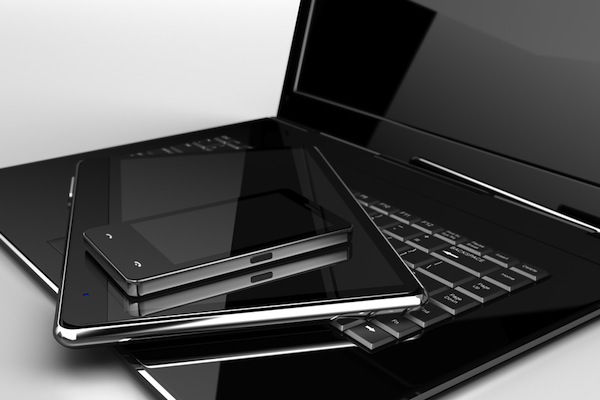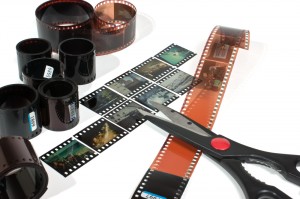
Programmer Chris Boss has contributed some intriguing BetaNews commentaries and analyses about the state of application development and also Windows 8. Some readers call him old-fashioned, for his views on developing software. I disagree. Chris is new-fashioned, and this old dog could teach you young pups some new tricks.
I don't refer to developer tools but Chris' philosophy -- that applications should be lightweight rather than bloated. He contends that some of the tools commonly used today encourage bloat. I'm not knowledgeable enough there to make a case for or against anything. But I can comment on trends that demand less bloat and well-written apps that consume less disk space yet are powerful.
Right now, the sudden surge in cloud-connected device sales has put Moore's Law in reverse. Newer computing products have less processing power, smaller storage capacity and tinier displays than PCs. Big is out. Small is in. This is true as much for notebooks -- particularly the new class of ultrabooks -- as smartphones or tablets. The trend affects Windows developers as much as those creating apps for, say, Android or iOS.
Mobility Matters
On Friday, we joked in the newsroom about an IDC press release stating Slovak PC shipments fell 13.4 percent year over year in 2011 -- notebooks by 17.8 percent. I posted the note about the findings, asking "Can we blame iPad?" but was earnest. Individual markets such as Slovakia, which aren't yet saturated as are so-called mature ones like the United States, foreshadow sweeping trends. Earlier in the week, IDC reported Spanish PC shipments falling a stunning 33.7 percent in 2011.
Pockets of growth remain: PC shipments to Central and Eastern Europe grew 7.5 percent year over year in 2011, IDC says. Vietnam: up 9.8 percent. However, whether shipments are growing or not, one trend is consistent: Laptops account for the majority of PC shipments in all markets. Mobility matters.
Meanwhile, smartphone and tablet shipments are way up, and they drag down PC sales in many markets. "Major trends in client computing have shifted the market away from a focus on personal computers to a broader device perspective that includes smartphones, tablets and other consumer devices", Steve Kleynhans, Gartner research vice president, says. The firm predicts that the cloud will replace the PC as most peoples' personal content hub by 2016.
The increasing popularity of smaller devices, even laptops, puts Moore's Law in reverse -- and that's a trend likely to last for several years. Hell, Microsoft champions it, by touting the value of ultrabooks over other laptops and developing Windows on ARM. Suddenly, Moore is less.
The trend is by no means new. The first laptops lagged behind desktop PCs, in terms of processor, graphics and storage. Then about three years ago along came netbooks, which during their brief surge accounted for about 10 percent of PC shipments. Since, tablets have largely pushed aside netbooks, but their computing processing, graphics and storage capabilities are about the same -- or less. Each category shares other attributes: smaller physical size, tinier displays, cloud connectivity, near-instant on capability and less of everything compared to PC desktops or notebooks.
Flash Your World
Storage capacity is moving in reverse, an accelerating trend as smartphone and tablet sales accelerate and newer laptops use solid-state disks. Sure, you can buy a laptop with beefy 500GB or 750GB hard drive but that svelte ultrabook is more likely to have a puny, but more efficient, SSD. For example, Best Buy sells 13 different ultrabooks, 11 of which come with SSDs-only. Five pack 128GB storage, while the others have either 240GB or 256GB solid-state disks.
The good news, sold-state storage capacity is growing and viewed by itself is on Moore's Law-growth track. But within the larger market, it's a step backwards -- Moore is less -- compared to overall PC storage growth trends.

Globally, SSD revenue grew 105 percent year over year in 2011 -- to $5 billion from $2.4 billion, according to IDC, which predicts 51 percent compound annual growth rate through 2015. "The increasing use of flash in enterprise solutions, explosive growth of mobile client devices, and lower SSD pricing is creating a perfect storm for increased SSD shipments and revenue over our forecast", Jeff Janukowicz, IDC research director, says. The analyst firm expects SSD prices to fall to $1 a gigabyte by second half of this year, increasing adoption in PCs.
Meanwhile, solid-sate storage with even smaller capacities is standard among smartphones and tablets. iSuppli predicts that NAND flash in media tablets will rise from 1.6 billion gigabytes last year to 16.3 billion gigabytes by 2015. Media tablets share of NAND shipments will rise from 9 percent to 17 percent during the time period. The analyst firm expects iPad to consume the most NAND flash, with 72 percent market share, this year.
"Apple’s continued domination of the sales of NAND flash for media tablets reflects not only the iPad’s commanding market share lead, but its extensive memory usage" Dee Nguyen, iSuppli analyst, says. "In keeping with its status as a high-end offering in the tablet market, the iPad employs a larger density of NAND than its competitors. Because of this, Apple’s iPad will continue to drive the growth of NAND sales in the tablet market for the next several years".
Solid-stage storage capacity on tablets is considerably less than ultrabooks or other laptops. iPad offers 16GB, 32GB or 64GB capacity, while most Androids top out at 32GB; a few come with more or micro-SD slots for storage expansion.
As storage decreases, need for more of it exceeds Moore's Law by several fold. Content isn't getting smaller but increasingly bigger, as people use more HD-capable cameras and camcorders. Already, more photos are taken with phones, many packing 5-megapixel cameras or better, than point-and-shoot digicams. That bloated, 500MB app suddenly is a storage burden when vacation photos and videos consume gigabytes on a 64GB or 128GB drive. Apps need to make room for content, which matters more to users.
App Diet Plan
Platform providers and developers cannot sustain the same approach to creating applications, as processing power, storage capacity and device and screen sizes decrease. Apple had the right idea with the App Store in 2008. Others followed suit, with Android and Windows Phone markets as leading examples. Mobile apps tend to be smaller, tighter -- and, granted, not necessarily as feature-filled as desktop counterparts. Apple's iPhoto for the Mac is a 725MB download, compared to 106MB -- still, pretty hefty -- for iPad; they sell for $14.99 and $4.99, respectively. Adobe Photoshop CS 5.1 Extended is 1.5GB, compared to 50.2MB for Photoshop Touch for iPad; they sell for $999 and $9.99, respectively.
Smaller and cheaper isn't necessarily bad. A developer can provide users with features they are most-likely to use -- and cut the bloat in the process. Meanwhile, the developer can sell additional apps that offer more functionality specific to tasks, rather than one, big bloated package that costs considerably more and puts all sales dollars in one basket. Truism: It's easier to sell several things for less than one item for much more.

The potential volumes are considerably higher, too. IDC forecasts smartphone shipments to exceed 1 billion units by 2015, for example. But there is plenty of opportunity now. "In December 2011, 47.6 percent of the total mobile audience in the US used apps, an increase of 13.3 percentage points", according to comScore's "2012 Mobile Future in Focus" report. "In Europe, 38.2 percent of the total mobile audience accessed mobile media via application, up 10.1 percentage points". More:
Apps are a critical component of the mobile media ecosystem, playing an important role in consumers' mobile device purchase decision while shaping their engagement with mobile media content...The strong rise in penetration of mobile media usage and continued adoption of different means of accessing digital content indicate significant opportunity for content creators, publishers and app developers as this behavior becomes even more ubiquitous.
Smaller apps for a larger range of devices -- and, for now, packing less oomph than PCs -- is the foreseeable future. Developers creating mobile apps are there today, in part because the platforms demand it. That's not so for Windows, where big is a motto only Texas can match. To embrace the future, which in part is Microsoft "re-imagining" the OS for touch and tablets, developers must start thinking Moore is less -- or less is more, if you like. That includes, Microsoft.
Chris Boss writes last week about currently available Windows 7 tablets:
If the principles of writing efficient software we learned years ago were implimented when writing software for today's Windows tablet computers, I think "fast and fluid" would definitely be the norm...
Today, Intel Atom CPU's are regularly criticised as being too slow, lacking power. Windows tablets (the reasonably priced ones) usually come with an Atom CPU. But it is programmers who are most likely to make this criticism. Why? Because their software runs too slow on these CPUs. But the problem is not the CPUs, but the software. A well-written WIN32 application can run very fast even on the Atom CPU.
He makes a good point. Windows developers can produce leaner software, and Windows Store gives them a means of doing so profitably. Microsoft puts the apps right in front of customers, inside Windows 8, and the opportunity to sell more apps for less.
Mmmm, maybe there's another principle here: More apps for less, and in the process trimming the bloat, offering users the tasks they need most and selling more apps instead of one big one. What could possibly be wrong with that?
Photo Credit: CLIPAREA l Custom media/Shutterstock



 If you own a computer, there’s a pretty high chance that you also own a digital camera, and this means that you probably have a large number of photos on your hard drive. Unless you have been particularly fastidious in renaming all of your images as you copy them from memory cards, your photo collection may well be a disorganized mess.
If you own a computer, there’s a pretty high chance that you also own a digital camera, and this means that you probably have a large number of photos on your hard drive. Unless you have been particularly fastidious in renaming all of your images as you copy them from memory cards, your photo collection may well be a disorganized mess.



